How Gold Is Made for Kids
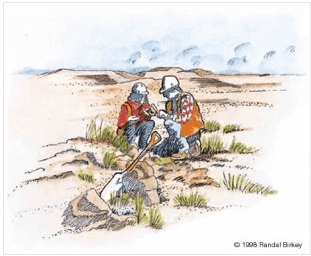
Randal Birkey was commissioned by a Denver, Colorado graphic design firm in the 1980’s to prepare a series of illustrations on “How Gold is Made for Kids”. The illustration series was to be used by their client, Santa Fe Pacific, (now Newmont Gold), in printed corporate communication brochures, posters and other tools. The series was […]
Small Gold Processing Plant
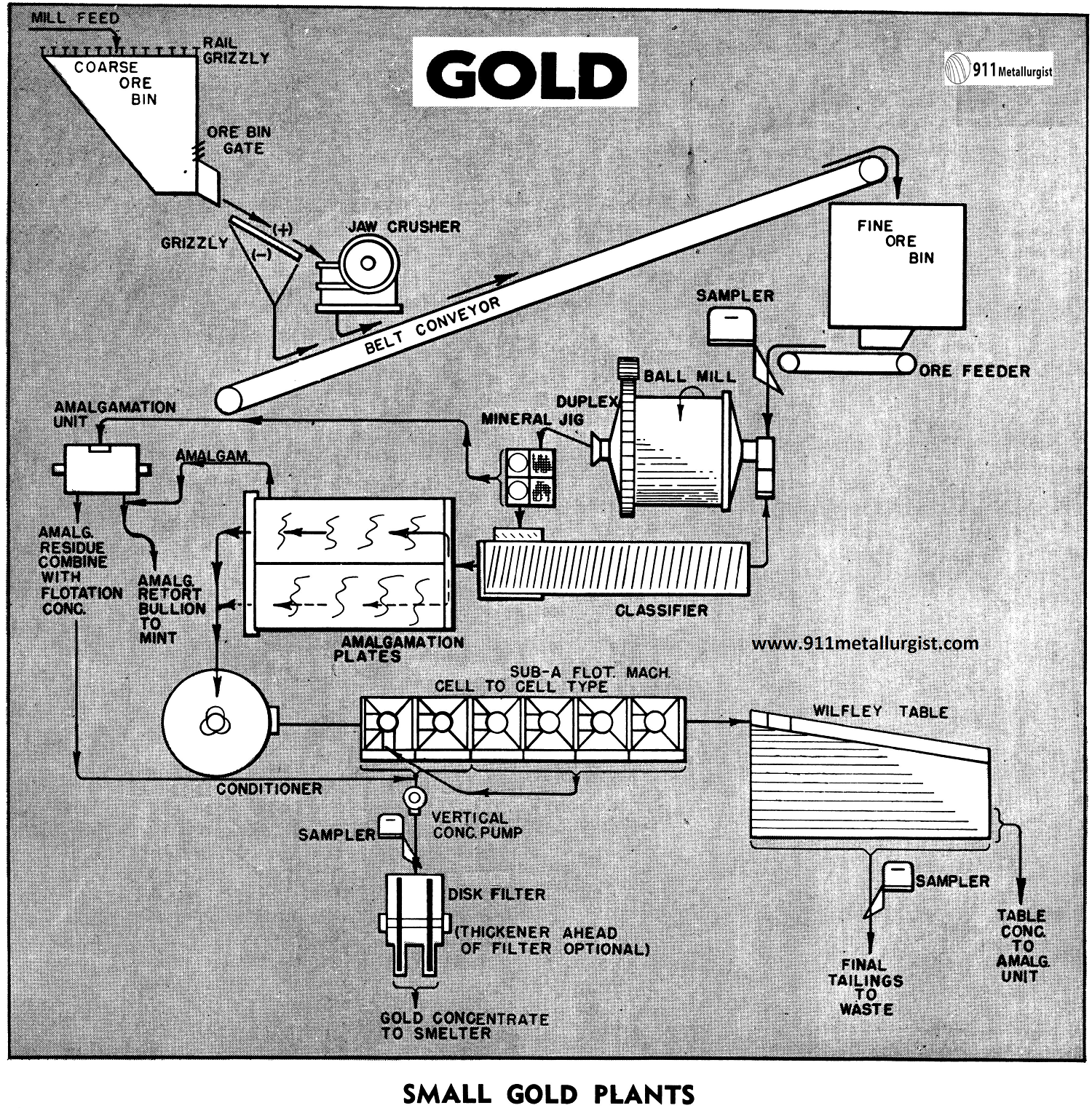
The problem a Small Gold Processing Plant can solve is for the need to to provide a small, relatively simple and inexpensive gold mill that will operate at a reasonable profit with a minimum of supervision. The limited availability of skilled operating personnel, availability of water and local power, high cost of transporting ore and expense […]
Sulphide Gold Ore Treatment by Leaching and Flotation
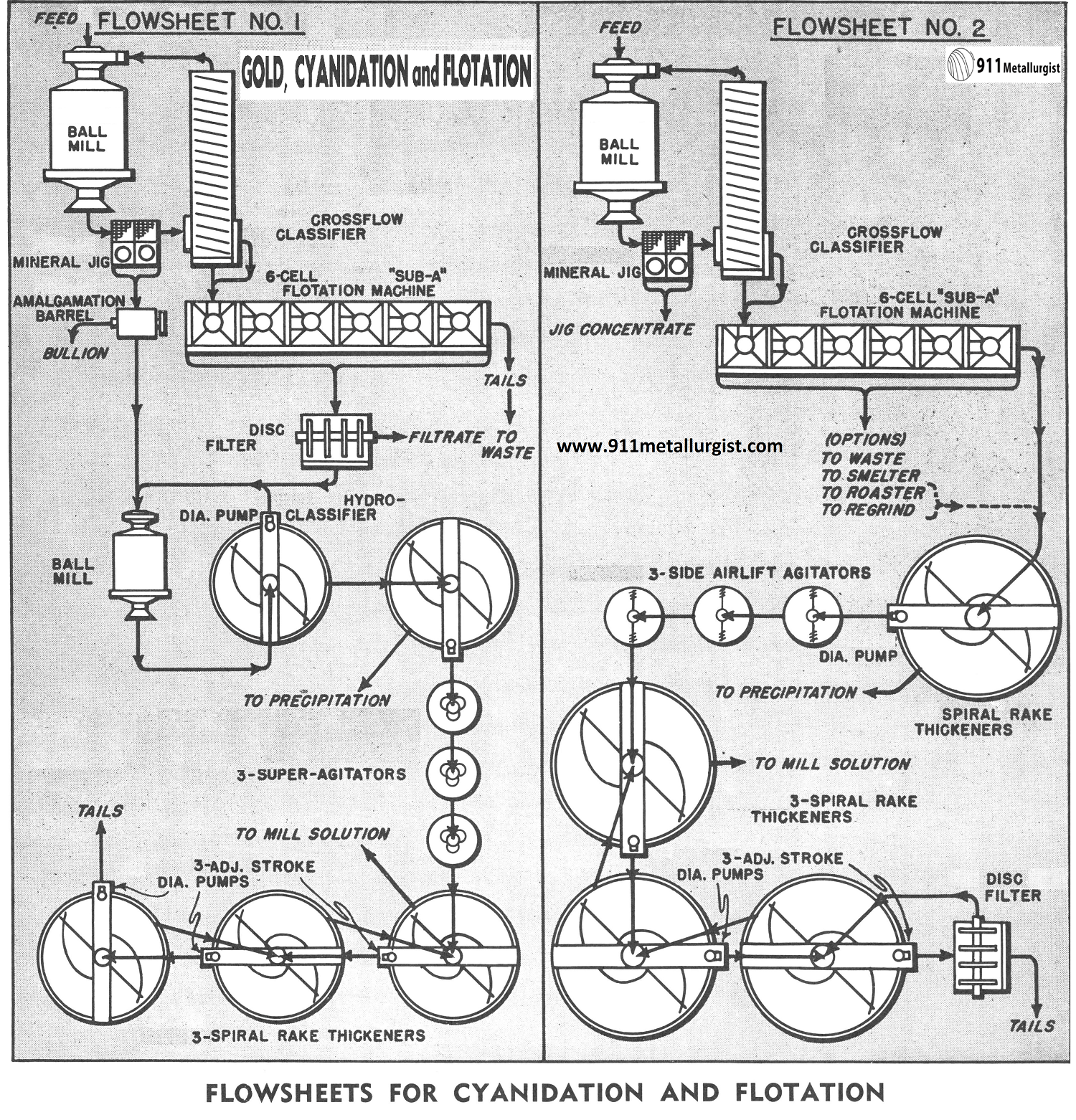
Problem with gold recovery from sulphide ore: How may a mill get the maximum recovery of gold from a sulphide ore, at the least capital cost and at the same time obtain the highest net return. This latter point is most important. In many cases a gold mill using an all-cyanide flowsheet with fine grinding of […]
Gold and Silver Leaching by Cyanidation

Introduction to Gold and Silver Leaching The cyanide leaching process is the most important method ever developed for extracting gold from its ores. The early development of the process is attributed to a Scotchman, John Stewart Mac Arthur, in collaboration with the Forrest brothers. The method was introduced into South Africa in 1890. From there it spread […]
Crusher Product Gradation Charts
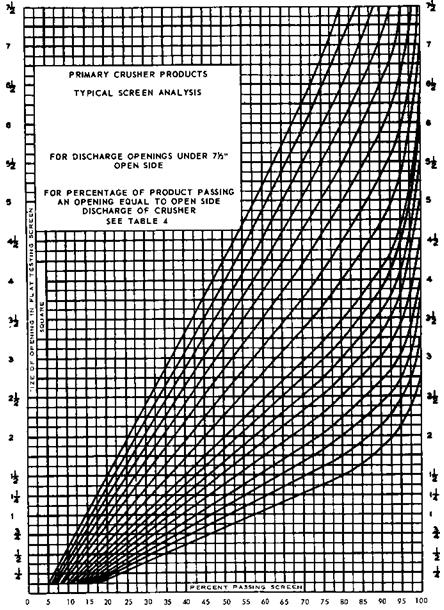
Aggregates required for a given job are generally specified by a full set of gradation limits and other relevant properties of the material. When rock is crushed, the product includes material of the size of the crusher setting, some slightly larger and the rest of the material smaller than the crusher setting. Crusher manufacturers publish grid […]
Flash Flotation with Closed Circuit Grinding
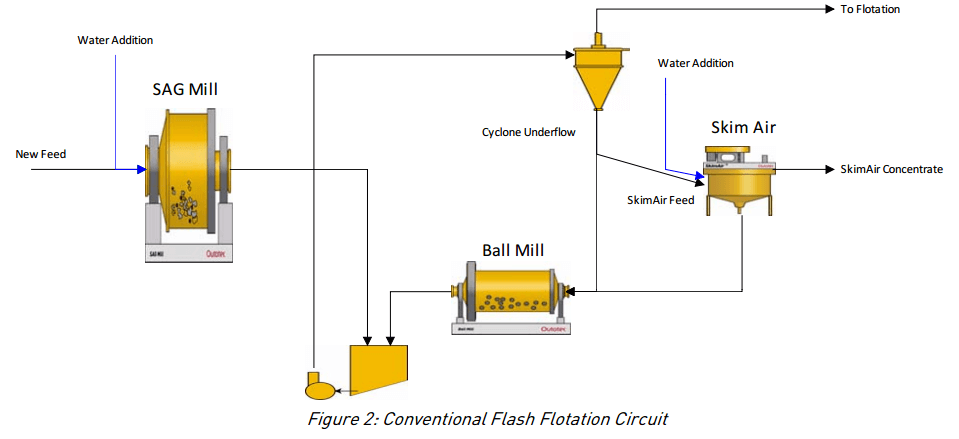
The reason why you need Flash Flotation in a Closed Grinding Circuit relates to “Recovering your mineral as soon as free” which has long been recognized in ore dressing practice. This not only applies to gravity treatment but also to flotation. For this application the Flash Flotation Cell was developed for use in the grinding circuit and […]
Easy Mill Expansion – Float Coarse at Higher Tonnage
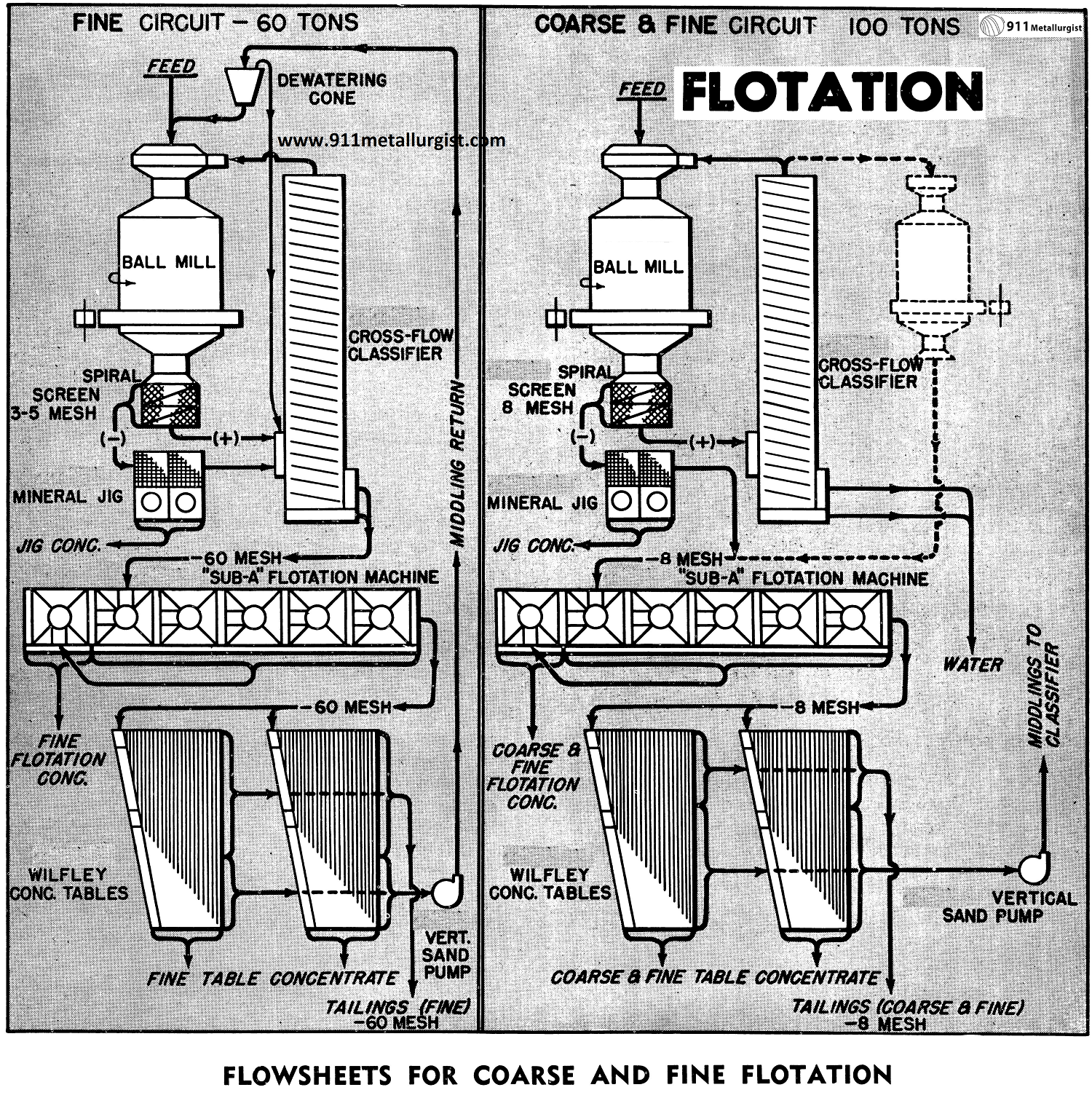
The Problem with Coarse Flotation and Recovery Many flotation plants today are grinding to fine sizes. This means that money is being spent grinding worthless gangue which might be discarded at a coarser mesh. Many plants are treating ores in which the gangue is free at a coarse mesh and where a coarse bulk concentrate […]
Feldspar Beneficiation & Flotation Process

Beneficiation by Flotation of feldspar is well established. It is a simple matter by flotation to remove the contaminating impurities and keep the alumina (Al2O3) content at 19% even on low grade feldspar ores. Dry recovery methods are economically limited to about 17% Al2O3. The problem in feldspar flotation is to recover slime free granular […]
Diamond Processing Flow Chart of Beneficiation
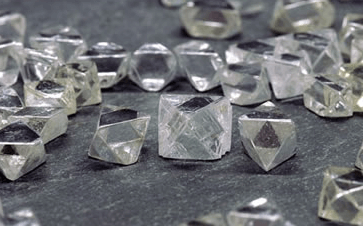
This is a Diamond Processing Chart as it was done in the 1950s. World demand and production of diamond both for gem and industrial purposes has increased nearly five-fold during the past 25 years. Improved mining and recovery methods together with the discovery and development of new fields has enabled mining operations to fill the […]
Crushing & Screening Plant Design Factors
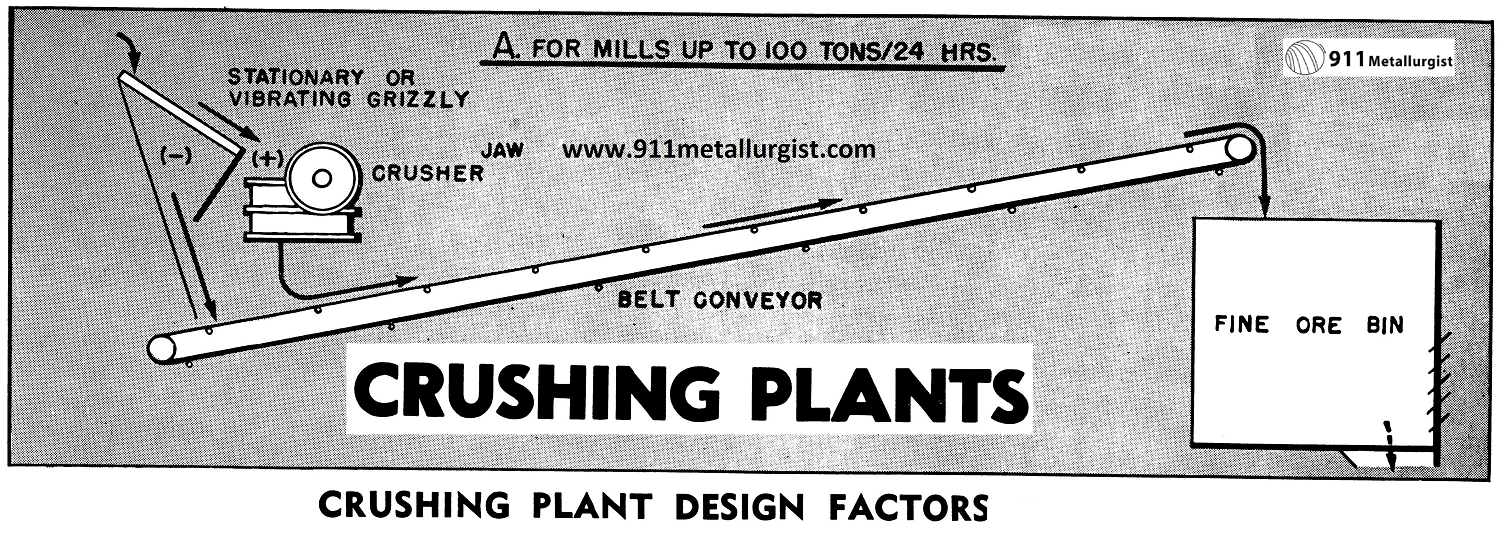
Crushing Plant Design and Layout ConsiderationsCrushing Circuit “A’’ shows a small simple layout for use in mills up to 100 tons. In order to keep the flowsheet simple, and because of the use of the forced feed type of crusher, we can crush small tonnages up to 100 tons per day with a very simple […]
